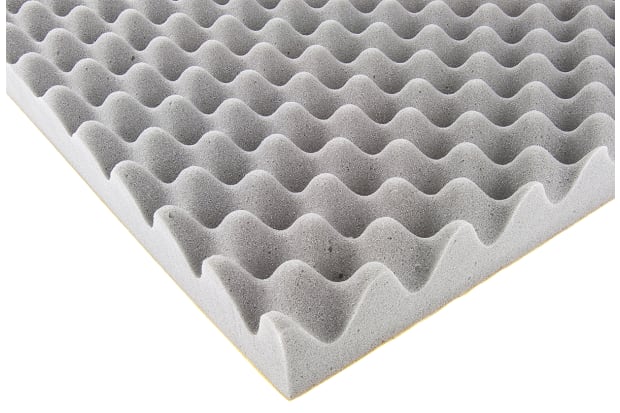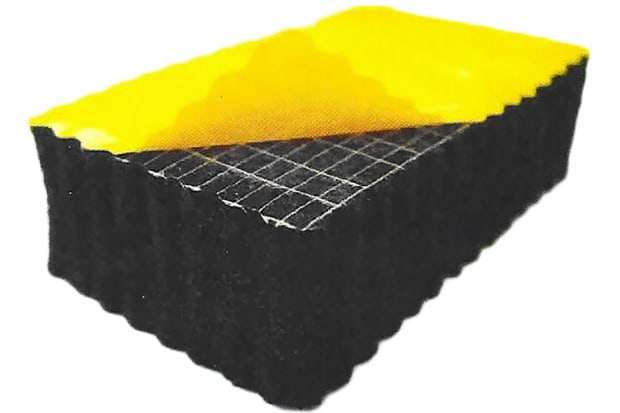- Published 24 Jan 2023
- Last Modified 31 May 2024
- 17 min
Soundproofing Guide
What types of soundproofing materials are available? Discover soundproof ideas and how they can be used to acoustically insulate walls and spaces.

Reviewed by David Carmichael, Solution Engineer (June 2021)
Many materials may be used for soundproofing purposes. For soundproofing advice, it is important to consider that the appropriate choice depends on the intended minimisation or elimination of sound. Soundproofing materials are commonly installed to improve sound quality within a room or reduce sound leakage into adjacent rooms and areas. Options include foam sheeting and acoustic insulation.
What is Soundproofing?
Soundproofing is a method of reducing sound pressure relative to a particular sound source and receptor. It may also be called decibel reduction, sound insulation, or acoustic insulation. But what is sound insulation used for? The installation of soundproofing should result in the reduction of decibels (dB) or absorption of sound. There is a variety of sound-deadening materials, each suitable for distinct applications. Soundproofing products are recommended whenever you want to minimise the sound generated in a different space, room, or enclosure from your own.
It can effectively suppress unwanted indirect sound waves, including the reflection of echoes, resonances, and reverberations. It can also reduce the transmission of undesirable indirect sound waves that would otherwise be highly noticeable to an involuntary listener.
It may be applied to residential or commercial properties. In the first instance, the aim will be to reduce or eliminate outside sound input. Residential soundproofing focuses on existing structures, such as windows and doors. As a result, standard options include fitting curtains and double-paned windows. Exterior windows may also be fitted in some instances.
How to Soundproof a Wall
There are two main types of walls people want to soundproof. The first type is a solid standard party wall, constructed with brick or block formation. The other type is an internal stud wall, usually consisting of a timber frame and plasterboard insulation. Higher levels of soundproofing are typically required for properties featuring stud walls. It is quite common to fit soundproof panels and construct acoustic walls using sound-absorbing materials for walls against noisy neighbours. Such methods may also be used for effectively soundproofing internal walls in a bedroom, for example.
The first key step when soundproofing a stud wall is to check for gaps or weak points. These can be filled with an acoustic sealant for improved security. The process may then continue with the improvement of walling mass and the addition of suitable sound insulation material for walls between timber battens. It is advisable to use a combination of materials to minimise noise at different frequencies.
The highest level of soundproofing can be achieved by creating a room within a room, separate from the external structure. This may also be called acoustic decoupling. It involves the elimination of vibration transferred between solid materials and through the air. However, it is imperative to account for safety implications, ensuring a reasonable degree of ventilation and avoiding gas heaters.
Alternative methods for soundproofing walls include the installation of thin sound panels and complete acoustic wall systems. Panels allow for sound minimisation without sacrificing interior space. However, a combination of materials should be used in instances requiring high soundproofing levels. High-density acoustic insulation slabs can be fitted for sound absorption and reverberation control. You also have the option of fitting stud walling, with different levels of thickness and insulation to suit existing stud walls.
For those wondering how to reduce noise through walls UK homes typically have, interior wall soundproofing techniques and the use of sound-deadening material for walls can be particularly effective. When choosing soundproofing walls materials, it is crucial to consider both the type and thickness of the materials to ensure optimal noise reduction.
How to Soundproof a Room
You might be keen to soundproof an entire room for a range of reasons. It might be that you want to create a separate creative space, where you can maintain full concentration without disturbance. Alternatively, you might be creating a home entertainment space, where sound should be fully enclosed. Whatever the case, there are options to consider.
If you're wondering how to soundproof a room in the UK, the process of soundproofing a room should begin with the identification of any noise sources. This will affect the choice of solution. The variety and intensity of noise should also be considered. Different sound-dampening materials are suited to solid and stud walls, as explained above. Knowing how to block sound between rooms effectively is crucial for achieving noise reduction.
The first step in soundproofing installation will be to add mass to the walls. This might involve recycled cotton batts or sound isolation systems. The ceiling should be the next area of the room to be soundproofed. Soundproofing insulation may be fitted between the joists of a ceiling during construction. Alternatively, acoustic panels may be fitted between the tracks of the soundproofing system of an existing ceiling.
Ideally, it will be possible to soundproof the floor from above. The installation of acoustic flooring will allow for the most effective minimisation of noise produced when people walk or move furniture across the floor. Improved soundproofing can be achieved through acoustic floating floors. These are recommended methods and materials for soundproofing a room. By carefully selecting the right soundproof material for the room, you can significantly enhance the overall acoustic environment.
How to Soundproof an Office
Soundproofing can be applied to commercial buildings such as restaurants, schools, and office buildings for reduced disturbance to staff and customers. Soundproofing technologies are often included in open-plan offices to minimise noise and boost productivity. Such technologies might also be included in areas where confidential discussions are regularly held.
Soundproofing an office can significantly enhance productivity by reducing noise distractions. Office soundproofing methods include installing acoustic panels or foam tiles on walls and ceilings to absorb sound. Alternatively, fabric-covered acoustic panels could be considered to meet both aesthetic and functional purposes. Another strategy for how to absorb sound in an office is to install floating floors. These should be isolated from the subfloor to reduce sound transmission.
Implementing these strategies will provide a comprehensive approach to soundproofing an office, enhancing the overall work environment by minimising noise distractions.
Types of Soundproofing
Understanding the different types of sound insulation is crucial as various types of sound-absorbing materials are available. Foam panels represent one of the most common sound insulation types. They are typically fitted to separate the wall between rooms for sound circulation prevention. However, there are numerous other types of sound insulation materials designed for various applications to enhance soundproofing effectively.
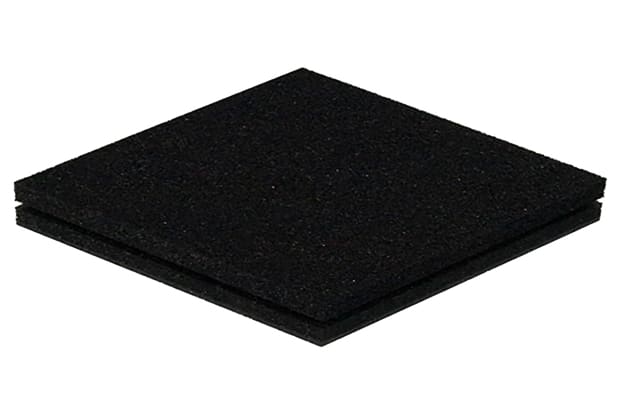
Soundproofing Panels
Soundproofing panels are ideally suited to deaden and dampen sound in restaurants, offices, and other types of commercial space. Such panels are made from high-density acoustic plasterboard, preventing sound transfer between rooms. Available options include fabric-wrapped, perforated wood, and water-resistant panels, depending on your requirements. Panels like these are designed for a range of purposes including the absorption of sound waves, clarification of speech, and limitation of reverberation through interior spaces. They are equally suitable for domestic and commercial applications.
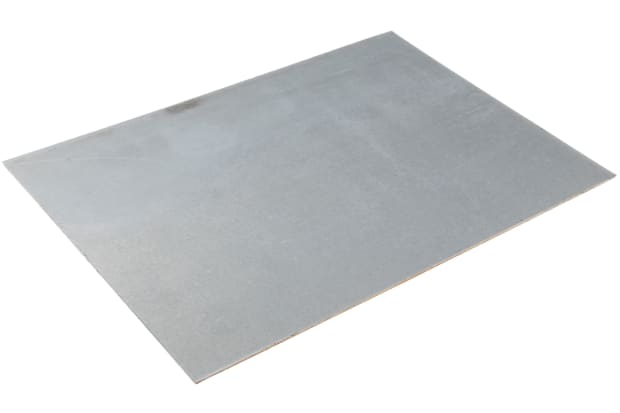
Soundproofing Sheets
You can buy soundproofing sheets complete with a variety of fill materials and facings. Each material has excellent sound absorption and insulation qualities, as well as ensuring protection against dust and moisture. Some of these sheets also feature adhesive backing for secure attachment to machinery and equipment.
What Materials are Best for Soundproofing?
There is a wide variety of soundproofing materials, each suited to different applications. The right choice will depend on the level of noise minimisation desired, which is normally indicated in the form of a dB rating. It’s also worth remembering that sound-absorbing materials will only be as strong as their weakest point.
The dB rating typically equates to the level of sound reduction achieved in the transmission of sound through existing materials and added soundproofing. Soundproofing equipment can be fitted to minimise noise in a wide variety of environments. Among the most effective soundproofing materials are those listed on a comprehensive acoustic materials list.
Consider the soundproofing varieties highlighted below:
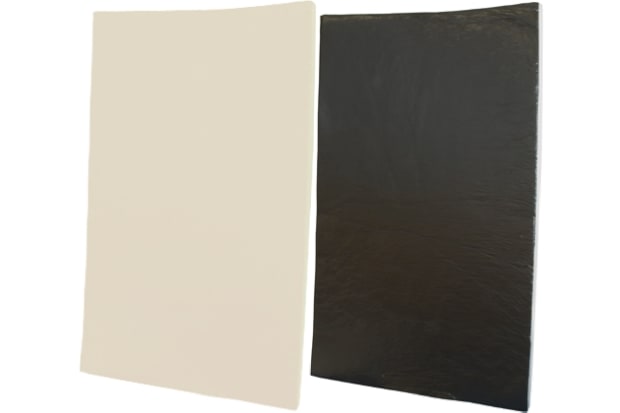
Foam
Soft and lightweight soundproofing foam is designed for the absorption of natural sound waves and the prevention of noises generated by contact with hard surfaces (such as walls and ceilings). This involves the conversion of sound energy into heat and the minimisation of sound waves circulated through a room. Such foam may also be fitted for improved sound quality, particularly in music studios. The thickness and density of the foam will directly affect sound penetration.
Material:
- Polyurethane foam
Benefits:
- High levels of sound absorption and insulation
- Protects against dust and moisture
- Chemical resistance
Typical Uses:
- Panelling of machinery
- Engine rooms
- Close-fit canopies

PVC
Solid PVC sheeting is another widely used soundproofing material known for its high mass, which serves as an effective noise barrier. This material is beneficial in both domestic and commercial applications, offering substantial sound absorption and insulation. Its solid structure blocks and reduces sound wave transmission, making it a reliable choice for various environments.
Material:
- Solid PVC sheeting
Benefits:
- High-mass noise barrier
- Effective sound absorption and insulation
Typical Uses:
- Various domestic and commercial applications
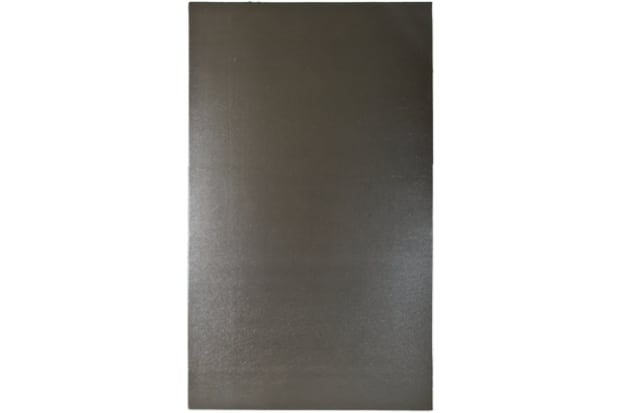
PUR
Polyurethane (PUR) foam is notable for its high sound absorption and insulation capabilities. It provides excellent protection against dust and moisture and resists chemicals, making it suitable for use in pump enclosures and engine rooms. Its versatile nature and effectiveness at reducing sound waves make it a preferred material for industrial applications.
Material:
- Polyurethane foam
Benefits:
- High levels of sound absorption and insulation
- Protecting against dust and moisture
- Resistance to chemicals
Typical Uses:
- Pump enclosures
- Engine rooms
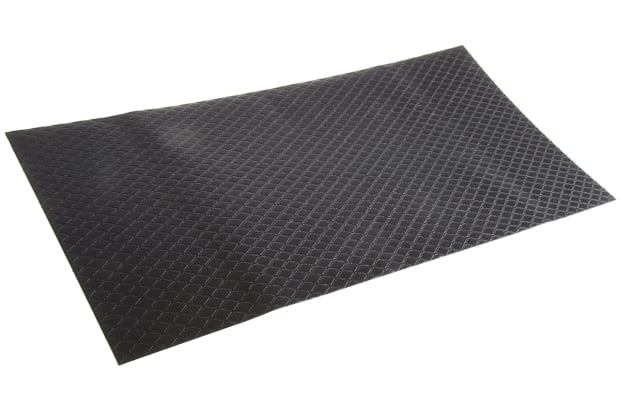
Adhesive Bitumen
Adhesive bitumen is typically used in industrial and vehicle applications to dampen and reduce body vibrations and air noises in metals and plastics. This flexible, black bitumen or plastic material adheres to surfaces, providing an effective barrier against noise. It is designed to meet industrial standards, ensuring durability and efficiency.
Material:
- Black flexible bitumen or plastic panels made to industrial standards
Benefits:
- Dampening and reducing body vibrations and air noises in metals and plastics
Typical Uses:
- Various domestic and vehicle applications
For those wondering what materials are soundproof, refer to the sound reduction index of materials and the sound absorption materials chart. These tools help determine what material is used for soundproofing specific environments. Several effective soundproofing materials are recognised for their high performance, such as acoustic plasterboard with dB reduction properties.
When selecting the thinnest soundproofing material, you must consider both the thickness and the materials used for soundproofing to achieve the desired effect. The list of sound-absorbing materials includes various options, each contributing differently based on their composition and application. Identifying which material absorbs sound and which materials absorb sound waves effectively will aid in making the right choice for your soundproofing needs.
Ultimately, when assessing what materials are soundproof, understanding which materials are soundproof in different contexts and what material is soundproof will ensure optimal noise reduction. When considering what materials absorb sound, you must also think about what is a good soundproofing material for your specific needs. Additionally, it's useful to know what are some soundproof materials that are commonly used and how they function in various applications.
Best Soundproofing Materials for Different Applications and Environments
Soundproofing a space requires the right materials. Whether you need the best noise insulation for walls or the best outdoor soundproofing material, this section will help you find the right solution.
Best Sound Absorbing Materials
Sound absorption is different from soundproofing; it aims to reduce echo and reverberation within a space. Here are some of the best materials for sound absorption:
- Acoustic Foam Panels: These panels are among the best sound-absorbing materials, often used in studios and offices to control noise levels. They are lightweight and come in various shapes and sizes to fit different needs
- Bass Traps: Specifically designed to absorb low-frequency sounds, bass traps are essential for achieving the best soundproofing material for recording studios and theatres
- Fabric Panels: Covered with acoustically transparent fabric, these panels are filled with sound-absorbing materials such as foam or fibreglass. They provide excellent sound absorption and are often used in commercial spaces
Best Soundproofing Materials for Outdoor Use
For outdoor environments, choosing the best soundproofing material is crucial to combat noise pollution. Acoustic barriers, made from materials like MLV or dense foam, are among the best outdoor soundproofing materials. They block noise from traffic, construction sites, and other external sources.
The Importance of Sound Insulation in Buildings
Soundproofing plays a crucial role in modern building design, enhancing comfort and functionality. Effective soundproofing ensures a peaceful environment, free from external disturbances like traffic, construction, or noisy neighbours.
In commercial settings, the importance of sound insulation in buildings becomes even more pronounced. Offices and workplaces benefit immensely from soundproofing measures, which improve concentration and efficiency by reducing auditory distractions. Meeting rooms and private offices require sound insulation to maintain confidentiality and prevent sensitive information leakage. Additionally, in educational institutions, libraries, and hospitals, soundproofing is essential to create environments conducive to learning, healing, and rest.
Moreover, soundproofing is a key consideration in the hospitality industry. Hotels and restaurants must ensure a tranquil atmosphere for their guests, who expect quiet and privacy. Effective sound insulation in these buildings can lead to higher customer satisfaction, directly influencing business success.
The importance of sound insulation in buildings spans multiple facets, from enhancing comfort and productivity to ensuring privacy. As urban environments continue to grow noisier, the need for effective soundproofing solutions in building design will only become more critical.
Soundproofing Installation
Understanding sound insulation methods is essential for the best results. Let us guide you through the different methods of sound insulation and provide a handy explanation of how to install soundproof insulation effectively.
Preparing for Installation
Before commencing the soundproofing installation, it's important to assess the area that requires sound insulation. Common options include walls, ceilings, and floors. Identify any existing gaps or weak points that may allow sound to penetrate.
How to Install Soundproof Insulation
Several soundproofing methods can be employed depending on the specific requirements of the space and the material or type of soundproofing you plan to use. Therefore, the process of installing soundproof insulation will vary based on your specific circumstances. However, here is a general overview:
- Wall Soundproofing: There are multiple options, including applying soundproofing materials directly to the wall or in place of existing drywall in the form of soundproof drywall fixed over insulation batts
- Ceiling Soundproofing: Options include installing insulation batts between ceiling joists, or installing a drop ceiling with acoustic tiles
- Floor Soundproofing: You could place soundproof material over the existing floor to reduce impact noise, for example
Noise Regulations in the UK
UK Building Regulations Part E (Resistance to Sound) specify soundproofing requirements for new homes and conversions. It includes wall and floor division. Sound insulation requirements are also covered. Under Part E of the regulations, a range of acoustic products must be installed. Soundproofing of flooring, floor joists, and the ceiling must all be ensured. According to the regulations, any dwelling must have internal airborne sound resistance of 40 dB at a minimum. It is also required that impact sounds be limited to 62 dB for floors and stairs in new builds, and 64 dB for conversion projects.
The table below highlights the basic sound insulation values for residential buildings.
For reference, DnTw describes the airborne sound-insulating capabilities of an on-site building element. It relates to all physical channels of transmitting sound such as through partitions, ceiling voids, and external walls. Conversely, Rw is the weighted sound reduction index (measured in decibels) and describes the airborne sound-insulating capabilities of a particular element of a building. LnTw refers to impact sound insulation, while Ctr is the correction factor.
Residential Building Areas | Min (dB) | Max (dB) |
|---|---|---|
Separating walls between rooms | DnTw+Ctr=43 | |
Separating walls between new dwellings | DnTw+Ctr=45 | |
Separating floors between rooms | DnTw+Ctr=43 | LnTw=64 |
Separating floors within residential buildings and between new dwellings | DnTw+Ctr=45 | LnTw=62 |
Internal walls between bedrooms, bathrooms, and any other room (except walls with doors) | Rw=40 |
New builds, conversions, and buildings scheduled for alternative use will be subject to testing as per the values set out in the table. If the values are exceeded, remediation work and re-testing will be required.
According to the regulations, there must be some type of acoustic insulation between flooring joists. Installing such insulation will result in an increase in mass and airborne sound minimisation. Two layers of acoustic plasterboard should be applied to the ceiling as well. The soundproofing of floors complete with sub-flooring can be accomplished with acoustic underlay mats. Adding an acoustic underlay can ensure compliance with soundproofing standards.
What are the Different Types of Noise?
Three primary types of sound can be minimised with soundproofing materials.
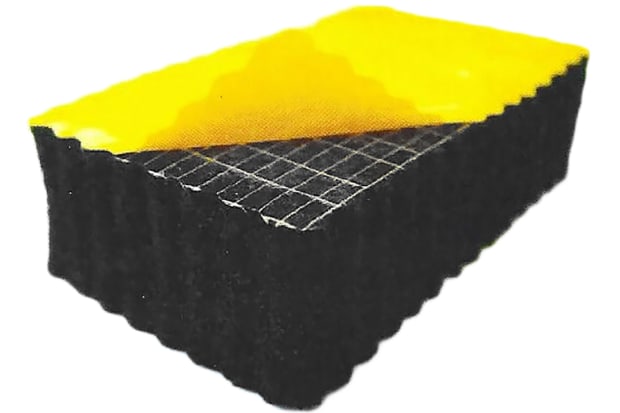
Airborne Noise
Airborne noise simply refers to noise transmitted through the air. It might be generated by everything from a television to a barking dog. Airborne and structural sounds are often connected, with one causing the other. It will be necessary to install a barrier or sound insulation material for the effective minimisation of airborne noise. The density and thickness will directly affect the soundproofing effectiveness of such materials.

Impact Noise
Impact noises are generated due to a firm connection between different types of material. As an example, there will be high-level impact noise when hammering a nail into a wall. Such sounds can be minimised through the placement of a barrier between the materials. Other options include floating floors and acoustic ceiling systems.
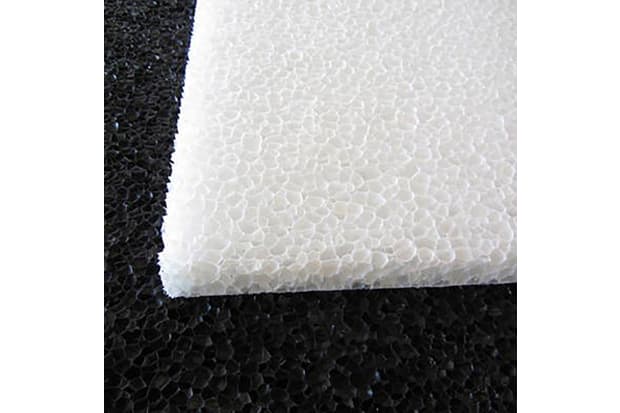
Structure-Borne Noise
Structure-borne noise is transmitted via a building's structure. It occurs due to sound generated by an adjacent vibrating surface. A helpful example is footsteps on a floor heard in the room below. As previously mentioned, structure-borne noise can result in airborne noise and vice versa.
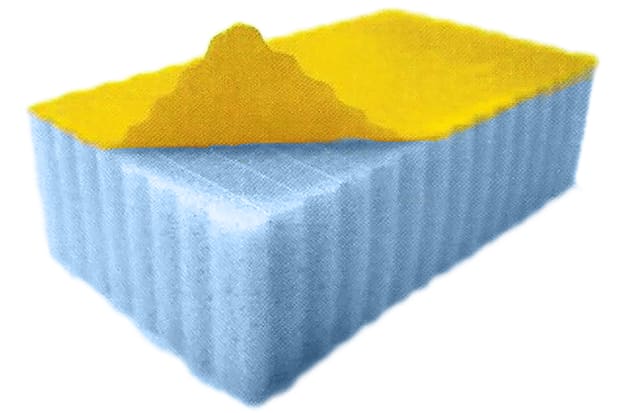
Flanking Noise
It's common to encounter flanking noise in flats, where sound is transmitted through the fabric of the building. It is typically a result of impact noise and circulates through interior walls. Flanking will be a particular issue if the walls are made of lightweight materials. Modern flats are commonly constructed from high-density blocks for this reason. Blocks with a density of at least 7 kilonewtons should be used for the effective minimisation of flanking noise and to ensure compliance with UK building regulations.
Popular Soundproofing Brands
Paulstra Hutchinson
From acoustic foam to soundproofing sheets and more, explore our range of Paulstra Hutchinson soundproofing products.
RS PRO
See our extensive selection of RS PRO soundproofing products and discover the perfect fit for your project.
Teroson
Browse our range of bitumen acoustic insulation from Teroson to find the most suitable product for your requirements.
